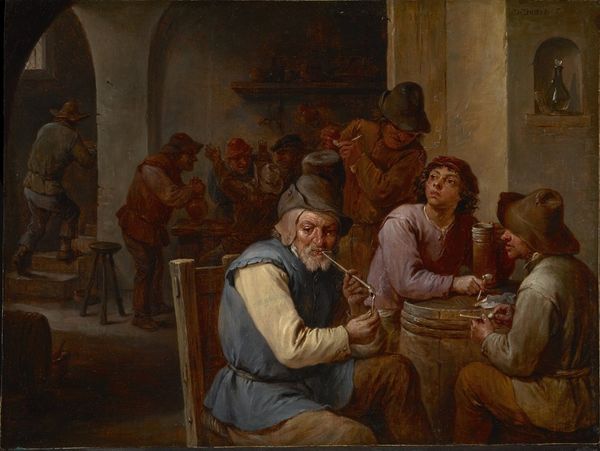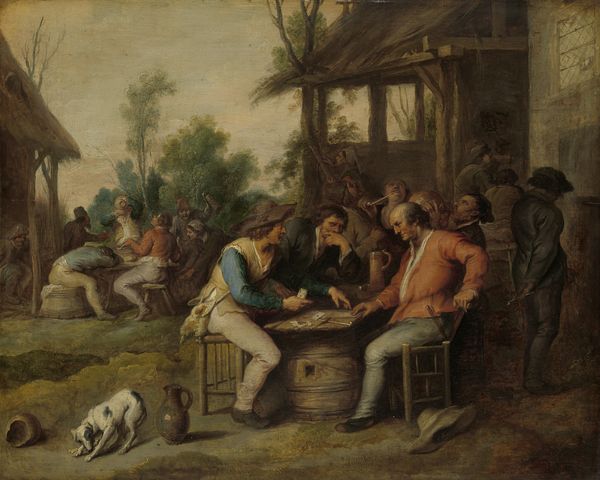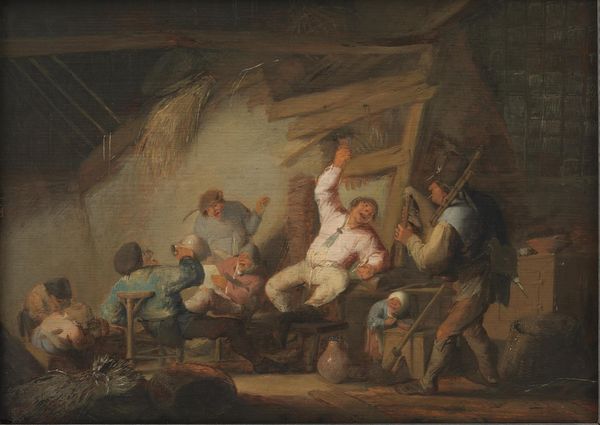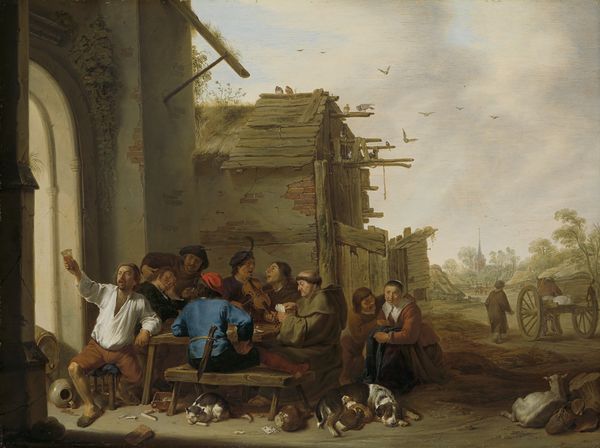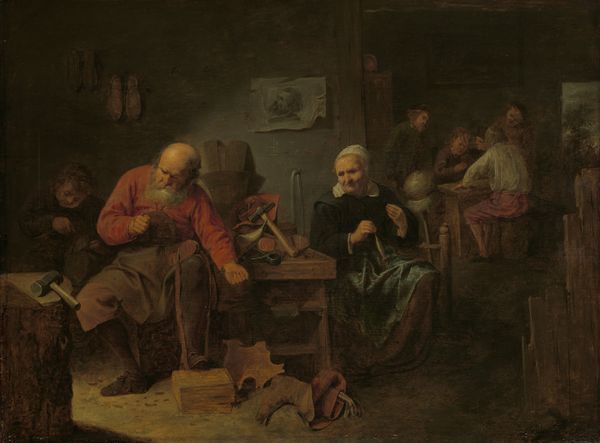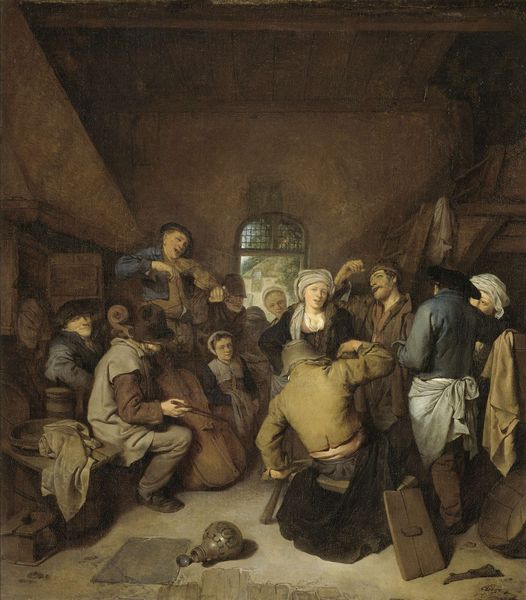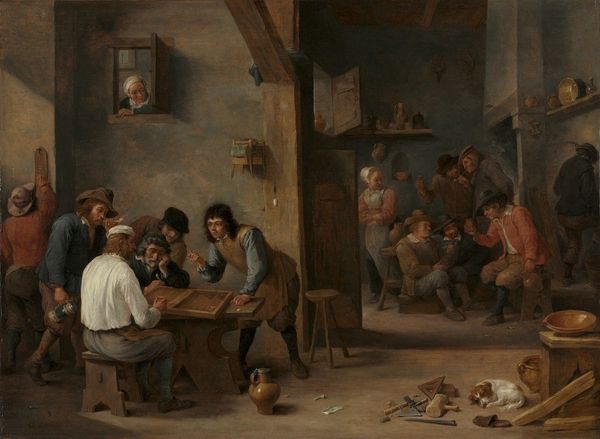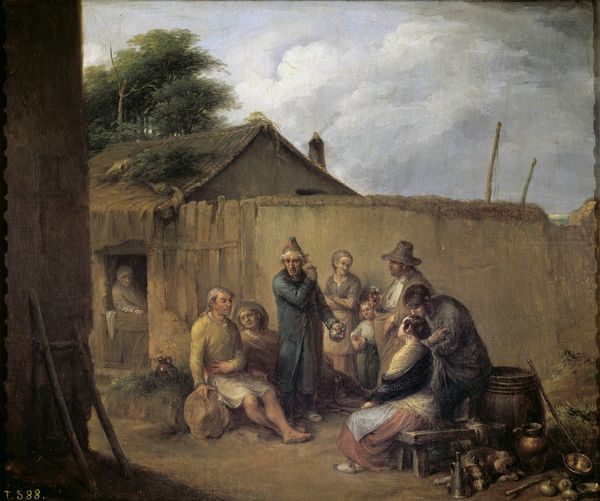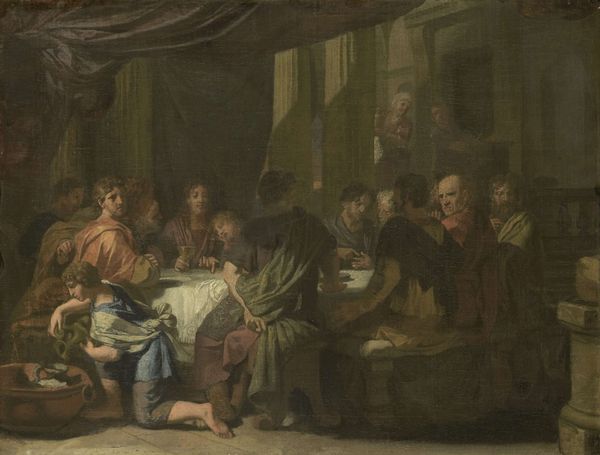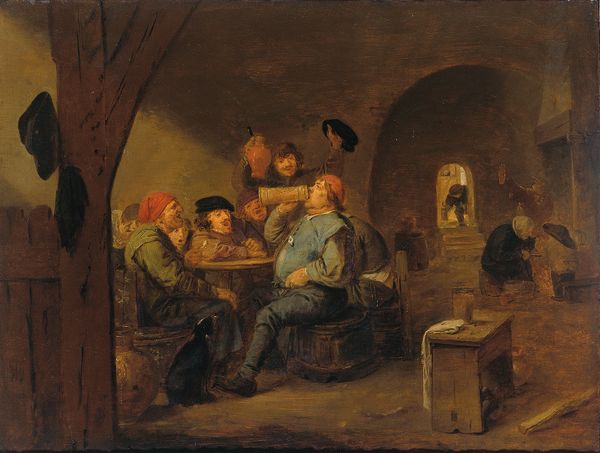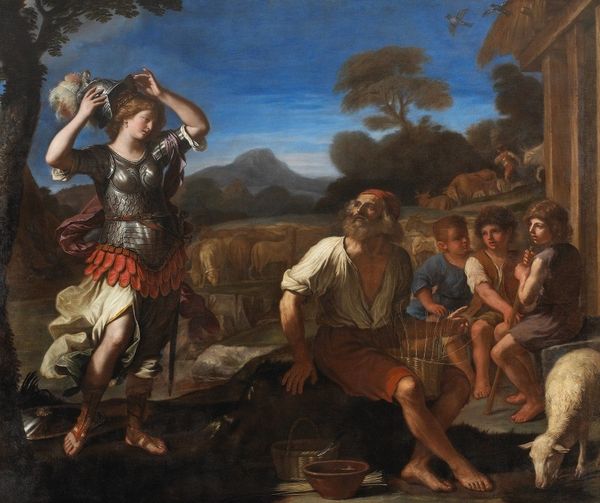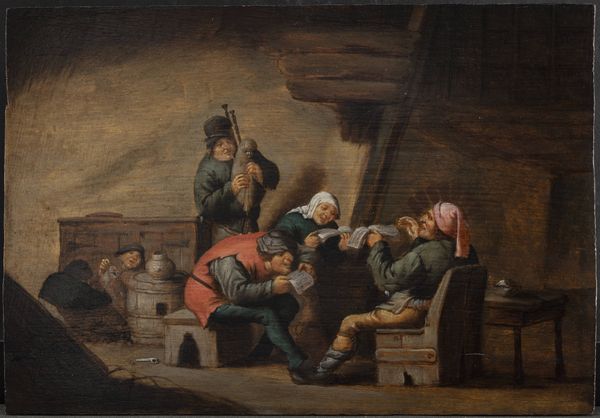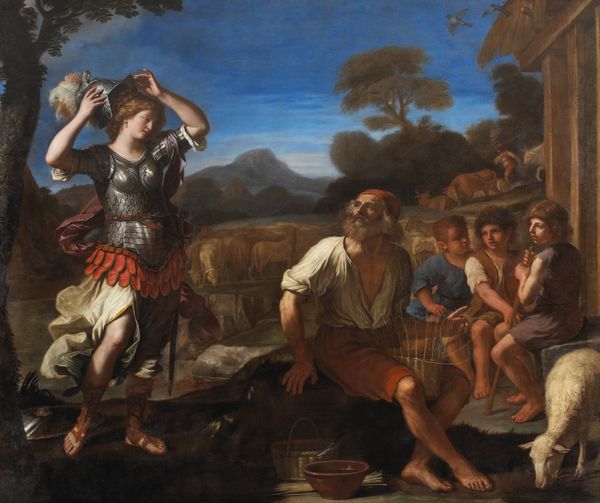
painting, oil-paint
#
portrait
#
narrative-art
#
baroque
#
painting
#
oil-paint
#
figuration
#
genre-painting
Dimensions: 181 cm (height) x 201 cm (width) (Netto)
Editor: Here we have Jan Victors’ painting “Boaz and Ruth,” created sometime between 1635 and 1676. It’s an oil painting currently housed at the SMK in Copenhagen. I'm immediately struck by how grounded and communal it feels, almost like a snapshot of everyday life, despite depicting a biblical story. How do you interpret this work through a cultural lens? Curator: It's perceptive of you to notice that tension between the biblical narrative and everyday life. Victors situates the Book of Ruth within the context of 17th-century Dutch society, raising questions about charity, labor, and gender roles. How do the figures interact? Where does power seem to lie in the image? Editor: Boaz appears to be watching over the meal, a protective or paternal gaze toward Ruth, perhaps? Is Victor trying to offer us an ideal image of inter-class relations? Curator: Exactly. Consider Ruth as a migrant worker, a widow, a woman dependent on Boaz’s generosity. The painting normalizes this patriarchal structure. It’s important to consider whether this image reproduces existing social hierarchies, or if it offers subtle gestures of resistance within that system. What details could point us in either direction? Editor: I guess you could argue that the simple dignity with which everyone eats—the unhurried way they are sharing the space, or even that there *is* food for everyone—offers some hint of… equality? Maybe even progress? Curator: Yes, and who is included in this scene, and who isn't? Victors chooses to portray the human act of community, highlighting social bonds – it is as much about those visible ties that bind, as those that may be absent. By noticing these visual choices, we begin to deconstruct not just the story, but its underlying ideological frameworks. What have you learned? Editor: I am seeing the image not as a passive retelling but a complex statement about 17th century hierarchies, social structure, gender roles. Curator: Exactly. It invites us to actively question the representation of historical power dynamics.
Comments
No comments
Be the first to comment and join the conversation on the ultimate creative platform.
